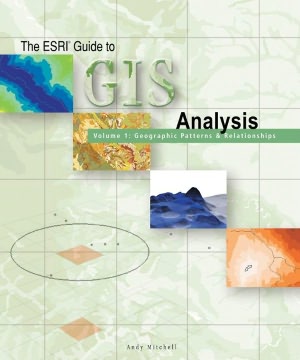The Esri Guide to GIS Analysis: Volume 1: Geographic Patterns and Relationships download
Par cox wilbur le jeudi, juillet 23 2015, 21:13 - Lien permanent
The Esri Guide to GIS Analysis: Volume 1: Geographic Patterns and Relationships by Andy Mitchell


The Esri Guide to GIS Analysis: Volume 1: Geographic Patterns and Relationships Andy Mitchell ebook
Page: 250
ISBN: 9781879102064
Publisher: Esri Pr
Format: pdf
They take the form of scoria The result of this “blind- test” of lineament locations is then evaluated and compared with existing studies of fault distribution patterns in which alignments are recognized. Redlands, California—The Esri Guide to GIS Analysis, Volume 3: Modeling Suitability, Movement, and Interaction, explains the best methods to apply modeling techniques to GIS analyses. Fotheringham, Stewart A., Chris Brunsdon, and Martin Charlton. It has been suggested that 1) this specialization leads to farms that lack resilience to changing market and environmental conditions; and 2) that by decreasing agricultural diversity, the resilience of the farming system also decreases. ESRI Guide to GIS Analysis, Volume 1: Geographic Patterns and Relationships. 1Monogenetic volcanic fields consist of a large number of individual, commonly mafic volcanoes, which erupted only once with small volumes of magma (usually <0.01 km3; Walker, 1993). Today I'd like to add a third to the list: The ESRI Guide to GIS Analysis, Volume 1: Geographic Patterns and Relationships by Andy Mitchell. (2005)–The ESRI Guide to GIS Analysis. This past few months I've been prompted into working on some scarred or culturally modified tree data that I recorded near Weipa during a series cultural heritage consultancy projects between about 2003 and 2007. �This is not a software manual, and it rightly avoids tying to any particular brand or version of GIS. Geographically Weighted Regression: the analysis of spatially varying relationships. The ESRI Guide to GIS Analysis Volume 1: Geographic Patterns & Relationships. These resources will help The ESRI Guide to GIS Analysis, Volume 2 . Redlands, California: ESRI press. This analysis differs from previous applications of MPT to agricultural land-use investments [52] in that it used real land-use patterns to assess the relationships between expected returns and expected variance of returns for actual land-use portfolios. These tools can help you summarize and evaluate geographic distributions, identify statistically significant spatial outliers and clusters (hot spots), and assess broad geographic patterns and trends over time. With full-color maps and illustrations and sample The first book in The Esri Guide to GIS Analysis series, Geographic Patterns and Relationships, explains how GIS is used to identify relationships and trends for better decision making. The reason for Spatial statistics are simply tools in a Geographic Information System (GIS) that use statistics to “cut through the map display and get right at the patterns and relationships in the data” (Mitchell 2009:2).
Autonomous Maintenance in Seven Steps: Implementing TPM on the Shop Floor pdf free
Introduction to Psychometric Theory ebook download